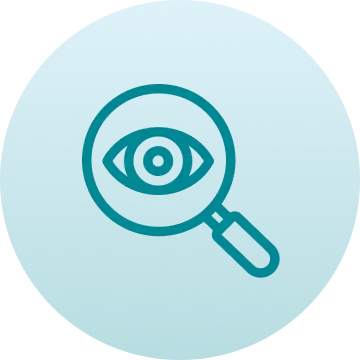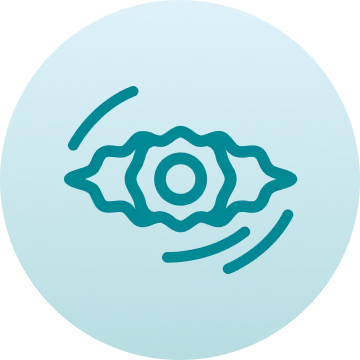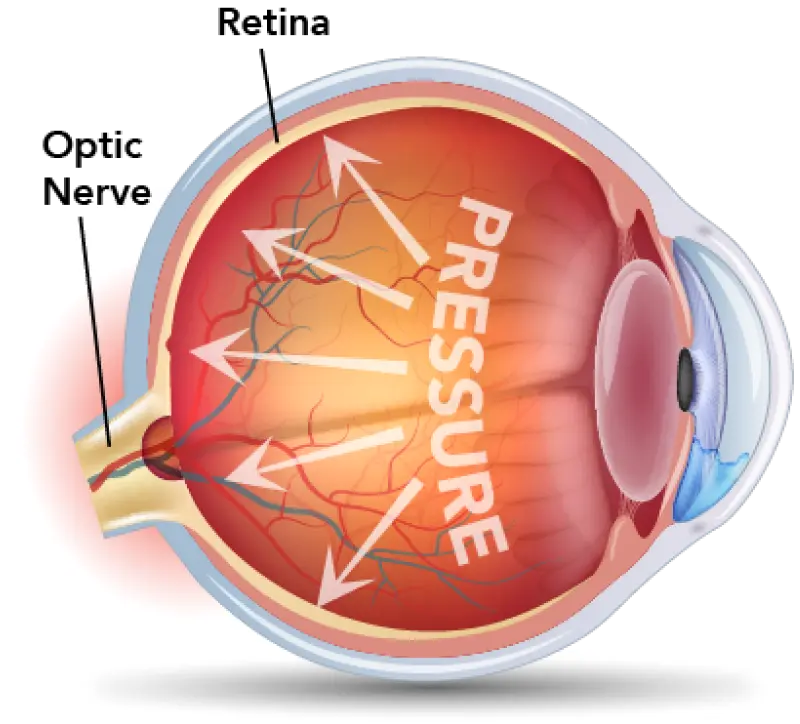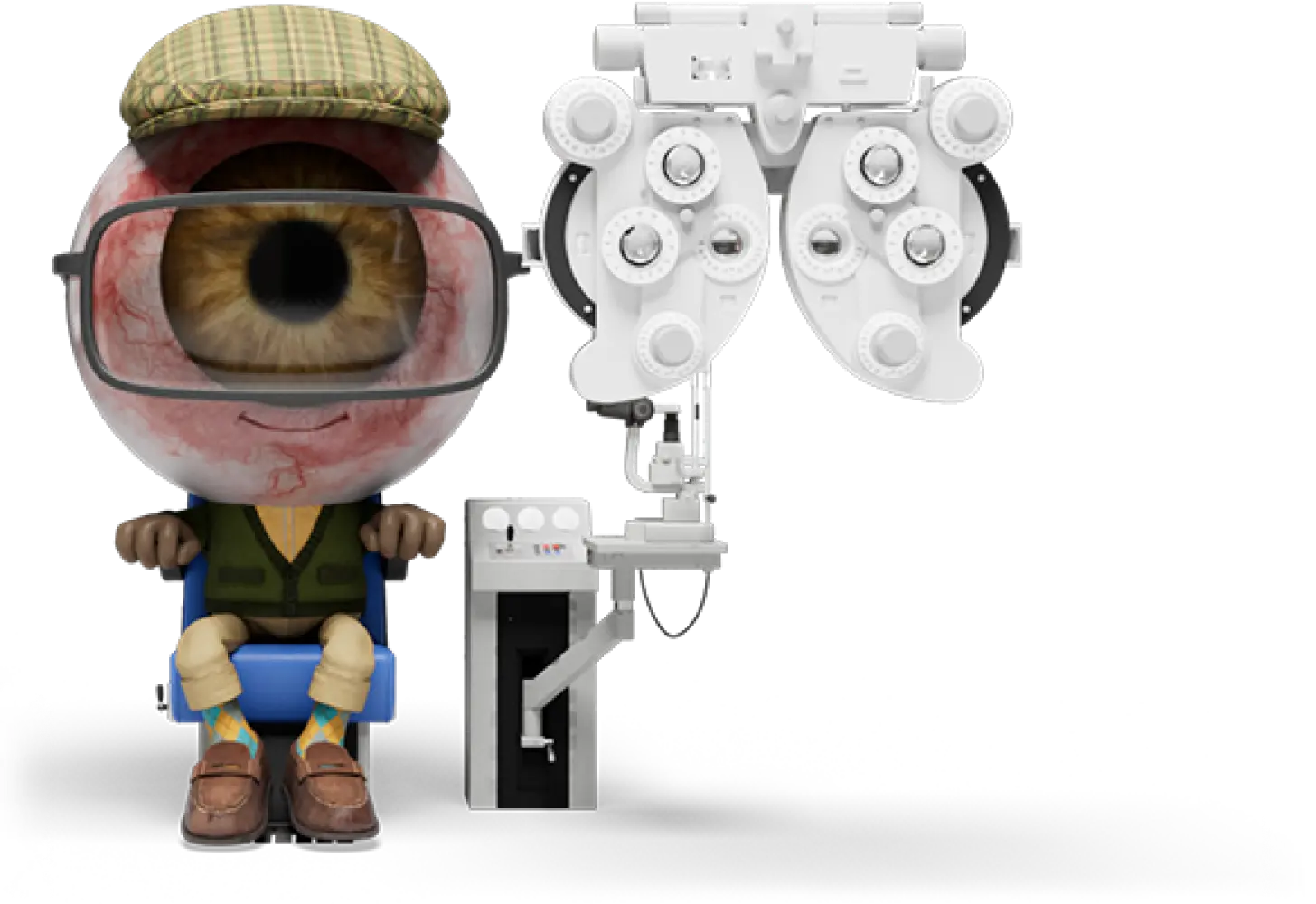
glaucoma management today
The approach to managing glaucoma is changing.
Historically, the most common treatment for glaucoma has been prescription eye drops. Although prescription eye drops are still commonly prescribed, in the last decade, minimally invasive procedures have been transforming the way doctors treat high eye pressure and glaucoma.
What is glaucoma?
Glaucoma is an eye disease caused by increased pressure in the eye, which can damage the optic nerve and reduce vision, sometimes making objects look blurry or dark. As it progresses, the blurriness or darkness expands and can ultimately lead to blindness.

Glaucoma symptoms and treatment
Glaucoma is an irreversible eye condition: once vision is lost, it cannot be restored. If left untreated, glaucoma can ultimately cause blindness. In fact, glaucoma is a leading cause of blindness in the United States. That’s why early diagnosis, treatment, and ongoing management are critical—glaucoma can’t be cured, but it can be treated to help prevent loss of vision.

The earlier, the better
Since glaucoma often has no noticeable symptoms in its early stages, regular eye exams, including specific glaucoma tests, are important for early detection and treatment to help prevent loss of vision—especially for those with family history of glaucoma who might be at a higher risk.

Managing symptoms
Symptoms can include blurriness and darkness around the edges of vision that can worsen and lead to blindness. That’s why it’s important to follow the treatment plan prescribed by your doctor and have regular eye exams.

Minimizing side effects
Side effects from prescription eye drops can include redness, irritation, burning, and stinging. Some people also have trouble putting drops in their eyes or sticking with their schedule. Managing side effects can involve changing the medication or trying a different treatment.

Facts and figures
Glaucoma vs ocular hypertension:
Ocular hypertension (or high eye pressure) and glaucoma are two separate conditions that both involve eye pressure, but they have different effects on the eye and vision.
High eye pressure means the pressure inside the eye is higher than it should be, but it has not yet damaged the optic nerve or caused any vision loss. It doesn’t have any symptoms—that is, you can’t feel eye pressure—but people with high eye pressure have a higher risk of developing glaucoma.
Glaucoma is a disease involving high eye pressure that damages the optic nerve, which can result in vision loss.
Did you know?
Clinical studies* have shown that:
90% of people who take prescription eye drops for glaucoma aren’t taking them exactly as prescribed
50% stop taking their medications within 6 months

Why be proactive with glaucoma treatment?
Historically, the approach to glaucoma care was more reactive—meaning many eye doctors waited until the disease got worse to take the next step. But in the last decade, doctors have been taking more of an Interventional Glaucoma approach—in other words, they’re being more proactive and acting sooner to manage glaucoma with minimally invasive procedures. While both proactive and reactive approaches to glaucoma treatment ultimately aim to reduce high eye pressure, there are important differences:
Proactive:
The Interventional Glaucoma approach means choosing a minimally invasive procedure earlier in the treatment journey to help slow the progression of glaucoma and minimize vision loss, while reducing the challenges of daily prescription eye drops
Reactive:
Keep taking prescription eye drops and “watch and wait” until glaucoma progresses before exploring alternative treatment options, while dealing with the side effects and risking irreversible vision loss
Benefits of a proactive approach
The Interventional Glaucoma approach means choosing a minimally invasive procedure earlier in your treatment journey. This may help:
- Prevent disease progression
- Reduce or avoid challenges associated with eye drops
- Minimize side effects
- Decrease or eliminate the need for daily prescription eye drops
- Lower eye pressure
*References:
- Sarkisian SR Jr, Ang RE, Lee AM, et al; GC-010 Travoprost Intraocular Implant Investigators. Phase 3 randomized clinical trial of the safety and efficacy of travoprost intraocular implant in patients with open-angle glaucoma or ocular hypertension. Ophthalmology. 2024;131(9):1021-1032.
- Sarkisian SR, Ang RE, Lee AM, et al. Travoprost intracameral implant for open-angle glaucoma or ocular hypertension: 12-month results of a randomized, double-masked trial. Ophthalmol Ther. 2024;13(4):995-1014. doi:10.1007/s40123-024-00898-y
- Nordstrom BL, Friedman DS, Mozaffari E, Quigley HA, Walker AM. Persistence and adherence with topical glaucoma therapy. Am J Ophthalmol. 2005;140(4):598-606. doi:10.1016/j.ajo.2005.04.051